Plan Your Trip: Two Weeks in Tajikistan
 Entertainment in Jalondi. All photos by Dennis Berman.
Entertainment in Jalondi. All photos by Dennis Berman.
In late July 2012, an estimated 48 people were killed in Khorog as a result of clashes between Tajik rebels and the government, as reported by UPI. As a consequence, the U.S. Department of State has issued a travel warning for visitors in the area. But the violence has largely settled. Regardless, a trip to Tajikistan requires considerable consideration and planning. Here's how to do it.
TAJIKISTAN — Two weeks is the right amount of time in Tajikistan. That's enough time to get deep into the back country of the Pamir Mountains and spend a few days in Dushanbe and Khorog, the two main departure points for the journey. Expect to spend a decent amount of that time in a car as you traverse long distances across bad roads. But you will also want to allow for plenty of time on horseback or foot, which will give you a unique view into Tajik terrain and culture.
Be sure to read Tajikistan Essentials and Road Trip to Khorog for everything you need to know about getting around, currency, and local fixers.
Day 1: Fly to Dushanbe
Arrive in the middle of the night, most likely from Istanbul. Confront the glories of post-Soviet bureaucracy as you wait for the slow visa-clearing process. Get picked up by driver from Marian's Guesthouse, where you'll be staying. Sleep a few hours, and then rouse to the smell of fresh bread.
Day 2: Explore Dushanbe
Give in to the creepiness and un-ironic kitsch — drug lords in passing Mercedes, circling elephantine monuments to the country's dictators and manufactured national heroes. There are a few moments of respite — the tiny museum of musical instruments, for instance, and the barbecue joints clustered around the National Opera building.

A Krygyz man in his traditional yurt. He invited us in for yak milk, yak butter, and yak cream. A retired teacher, he also read us original poetry and declared his love for the United States.
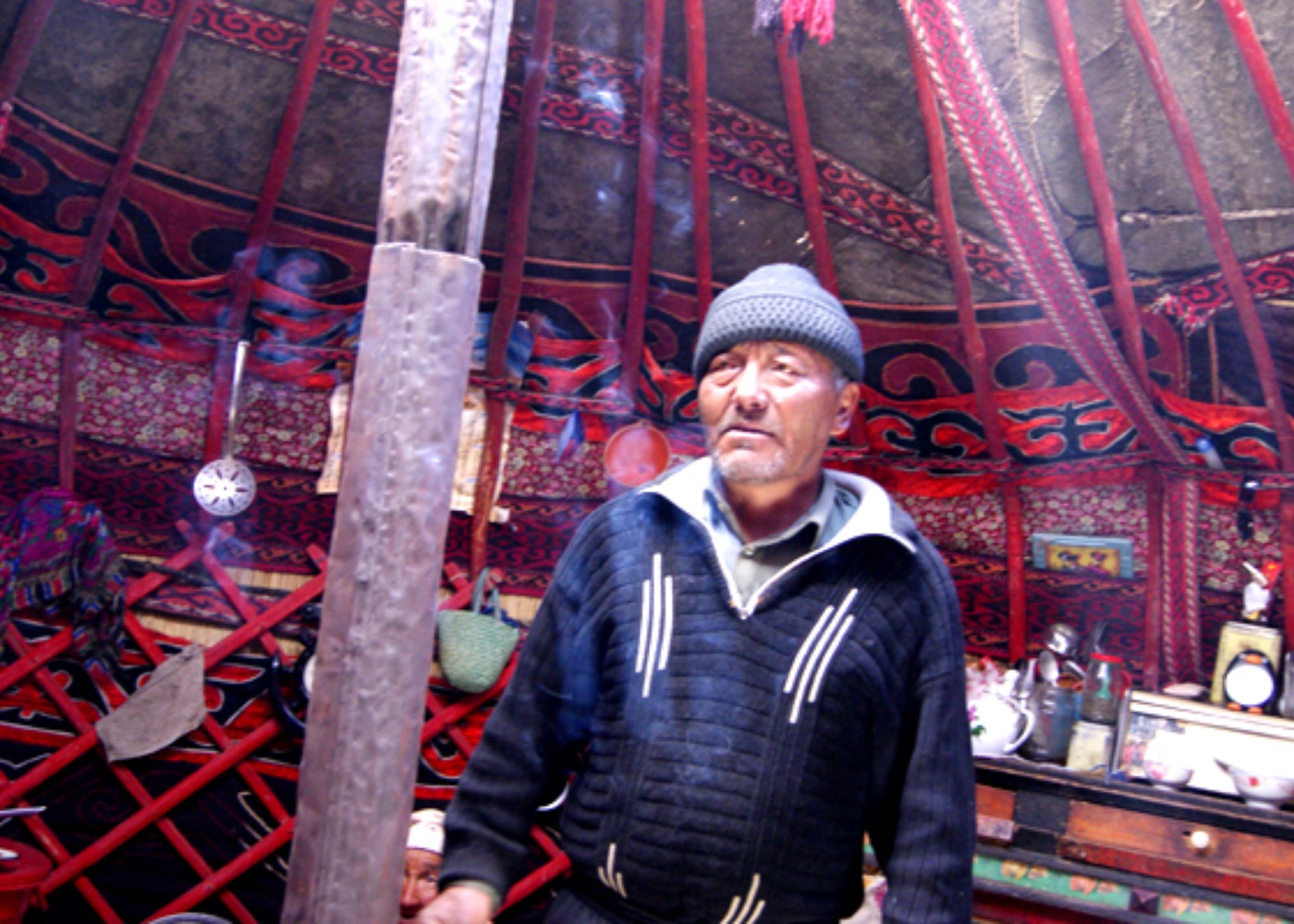
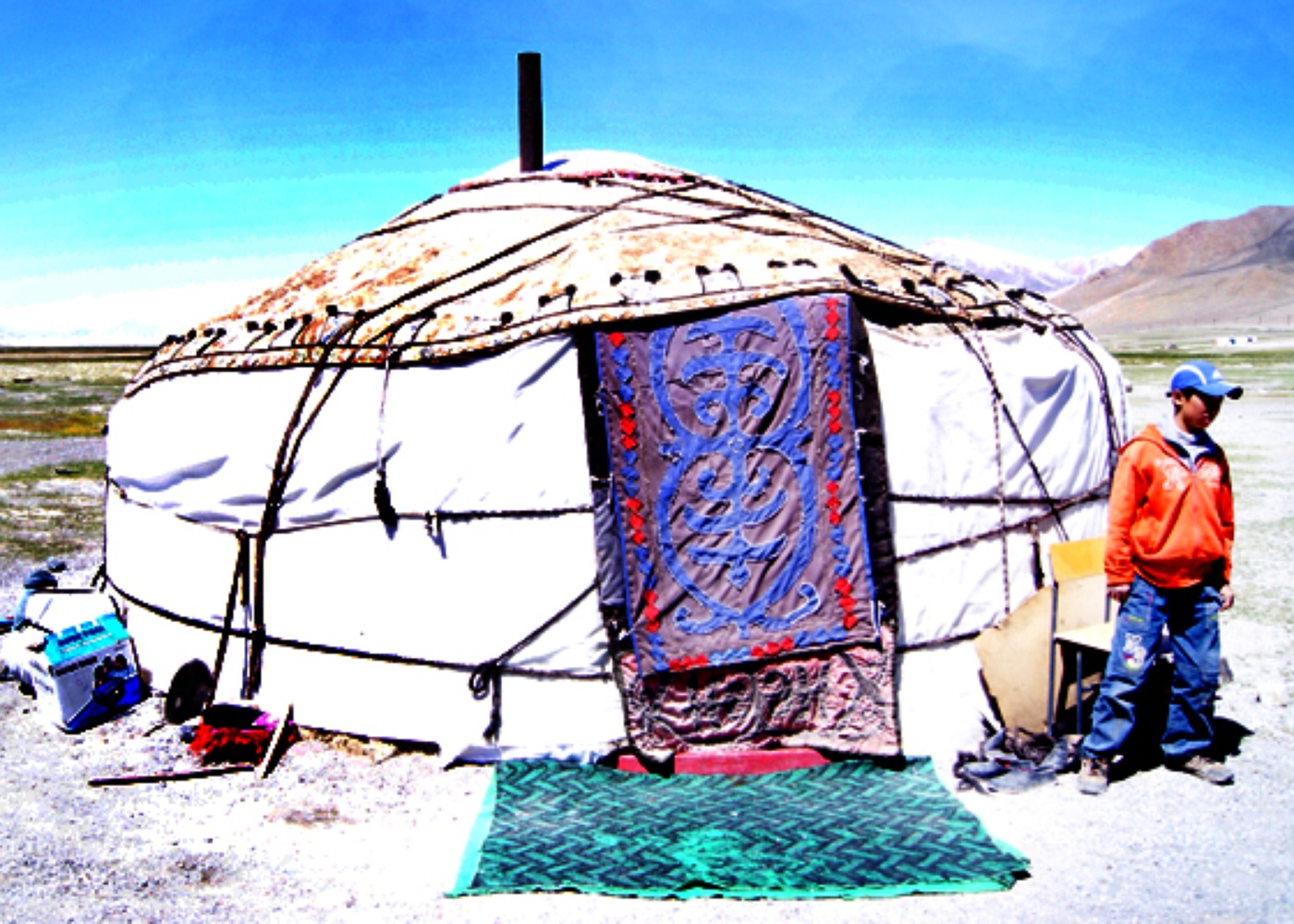
Day 3: Fly or Drive to Khorog
A flight can take one hour; a drive, nineteen. We recommend driving one way to Khorog (it's about 300 or 430 miles, depending which road you take) and returning by air. Go early, bring cash, and get ready to bribe the appropriate people (the surly ticket agent or airport manager, and $20 will do it) to get on the airplane. Only a few flights run each day and only when conditions are clear enough, as the airplane flies just a few hundred feet above the mountain peaks.
Read More on Fathom: Road Trip to Khorog
Day 4: Khorog
Khorog is tucked beneath the mountains by a swift turn of the river. It's home to the Pamiri people, who practice the moderate form of Ismaili Islam. The town is widely funded by the Aga Khan, the mysterious, Swiss-bound leader of the world's Ismailis. He funded a modern university here for men and women. It's a remarkable thing, considering that Afghanistan is just a few thousand feet away across the river. Take a walk, talk to the students. Hike to the top of the overlooking hill, where president Emomali Rahmonov's insultingly lavish retreat looms over the proud city.
Stay at Lalmo's guesthouse, and get in touch with our guide, Sharaf Saidrakhmonov (pamirguides@gmail.com). He arranged for a driver and the horse trip. He is awesome, quick-witted, and a very good English speaker. He was essential to making our trip happen.
Day 5: Jelondi Hot Springs
The Jelondi Hot Springs, about 80 miles from Khorog, are one of the only destinations in the area. The springs literally spurts out of the hillside, collecting into small rivulets and pools, sending steam across the thin grass hillsides. Once a Soviet-era retreat, the accompanying hotel is dark, dirty, and impoverished. At night, a crowd of zoned-out senior citizens watches propaganda broadcasts as the wind howls outside. Inside the baths, the light-green water, rich in iron, seems to soak right through your muscles. It is the apt metaphor for Tajikistan: Rich in natural resources but still very poor and haunted by its past.
Day 6: Batchor, Gund Valley
This is where the mountains really start to open up.
Feel the air. Hear the quiet.
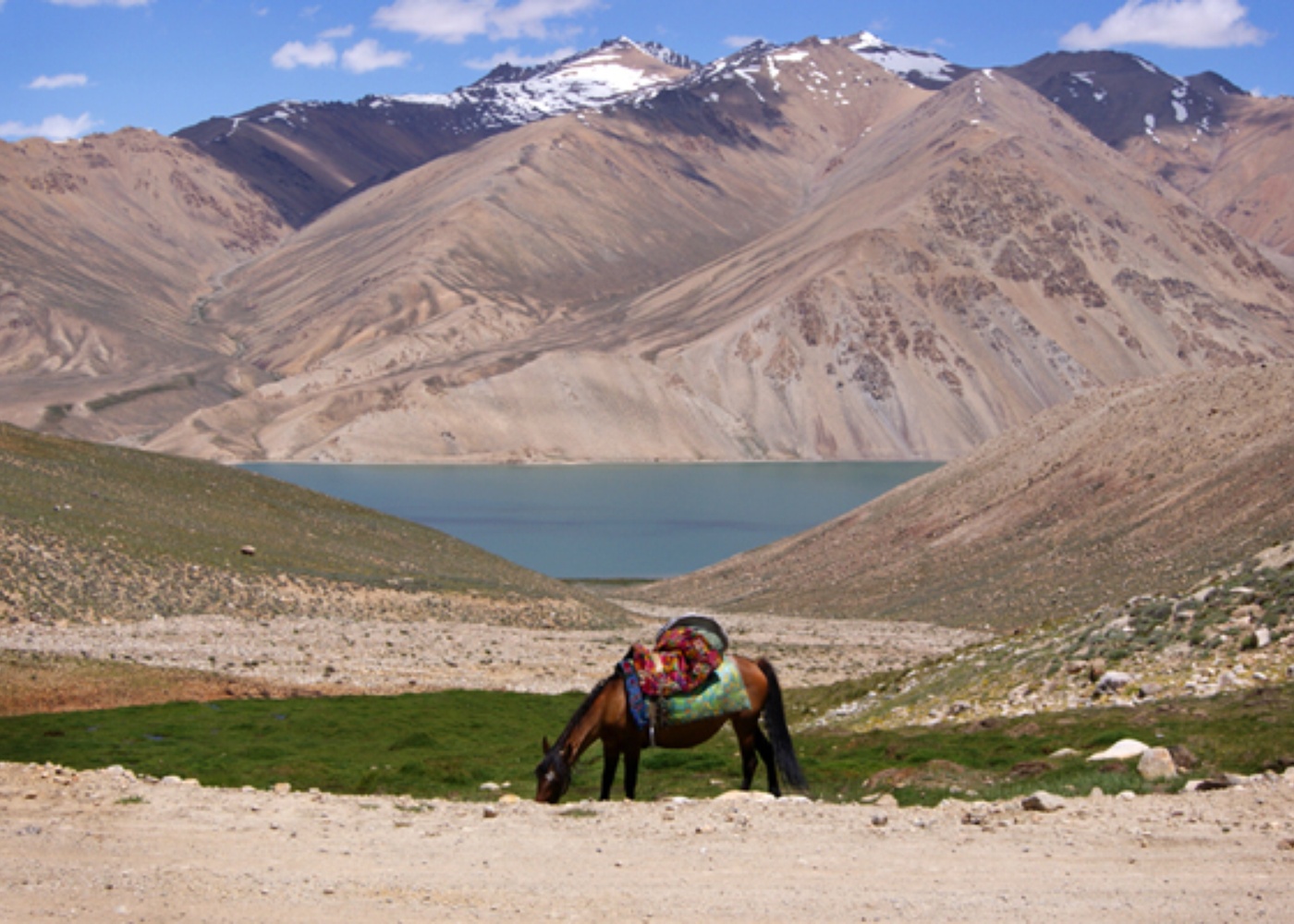
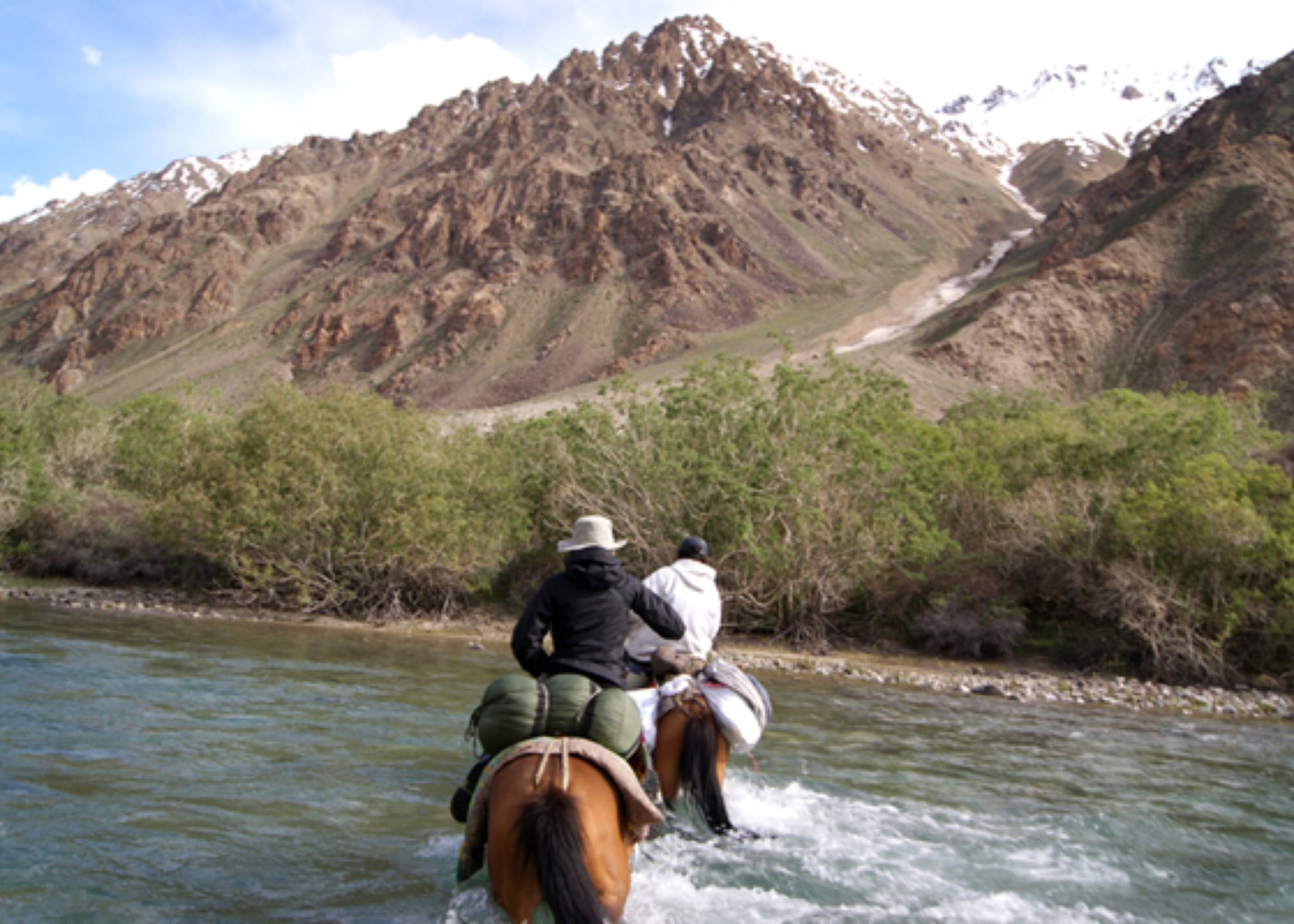
Day 7: Horse Trek and Camping
On horseback, the Pamir Mountains feel blessedly isolated. We passed only two other people on our route: a pair of Krygyz boys on a donkey. You will cross streams of fresh, cold water; wander past herds of sheeps and goats; trek up and down narrow mountain passes; and touch the last vestiges of glacial snow on the mountaintops. This is what you came for.
Day 8: Horse Trek to Yashikul Lake Dam, Stay in Bulunkul
See Yashikul Lake, and you'll know why the Chinese have designs on Tajikistan. It's an immensity of undisturbed, blue-green, fresh water, with nary a person, boat, or animal nearby.
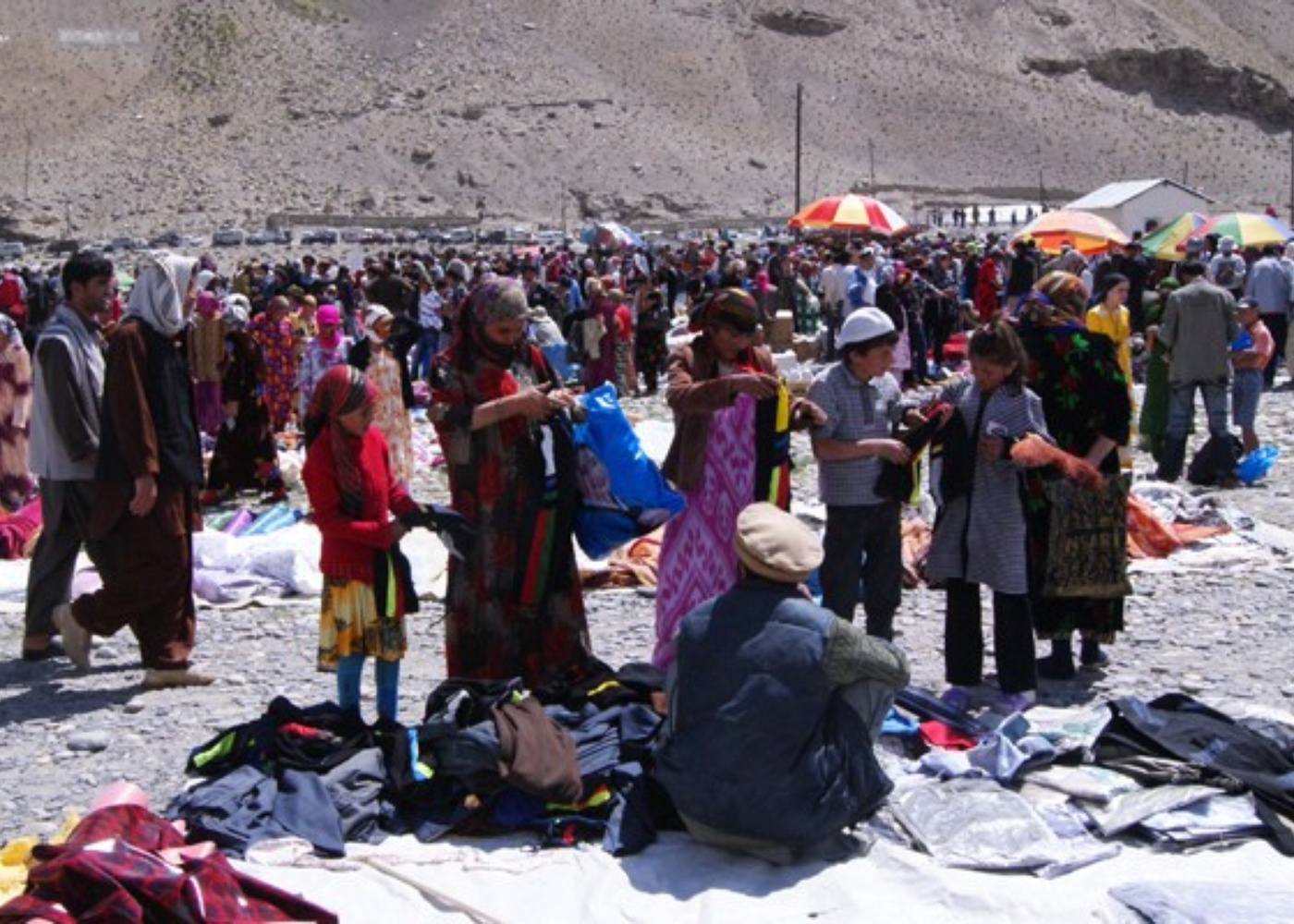
Ishkashim from Afghan soil. Across to the mountain is Tajikistan.
Day 9: Murgab on Western Border of China
nMurgab feels like the cantina scene in Star Wars, a hard-living trading outpost that is part Krygyz, Pamiri, and Chinese. Dust and dirt soak everything, but the people here have had the perseverance to set up an outdoor "mall" of shipping containers stocked with cheap food and the occasional souvenir. Stay at one of the guesthouses in town, but make sure it has hot water first. We spent two hours in search of a shower and eventually found a bucket shower with water heated by a coal furnace.

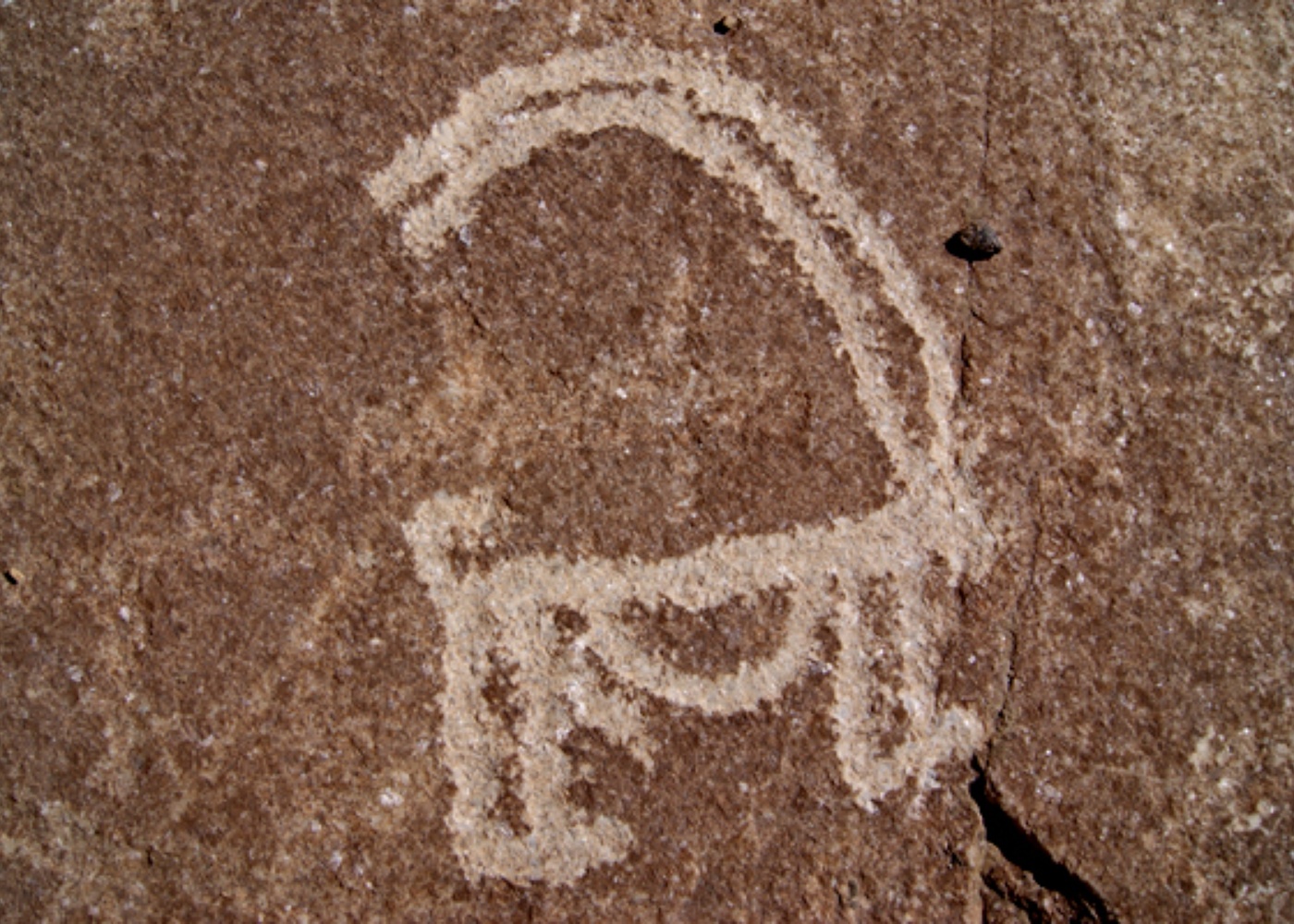
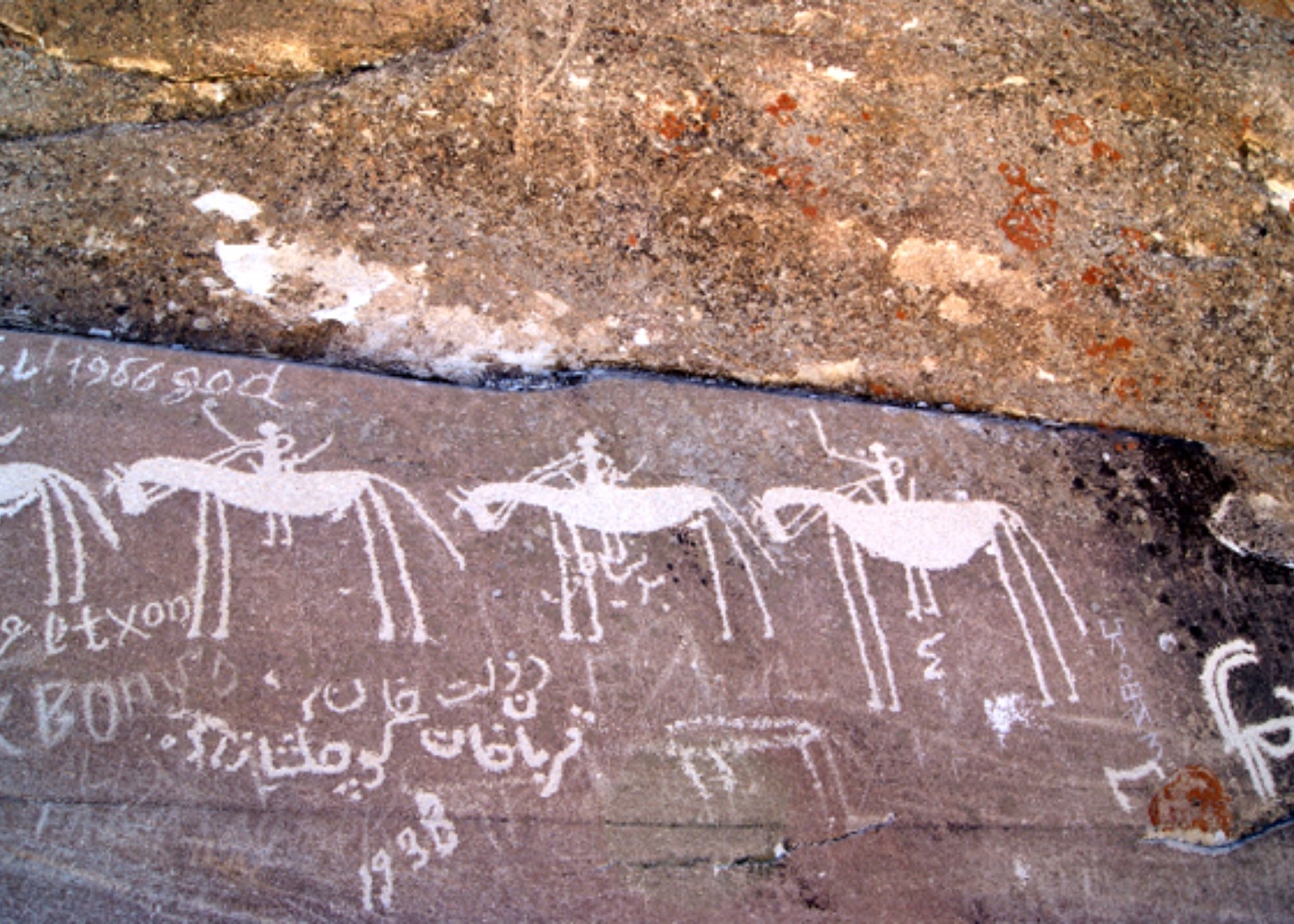
Centuries old petroglyphs from Langar, Tajikistan, just across the border from Afghanistan. The Arabic and Russian show just what a clashing point of civilizations this area has been.
Day 10: Langar
This is the most harrowing part of the journey, a slog across ancient Soviet roads that skirt steep mountain passes. The views across the water to Afghanistan are vast, humbling, and a lesson in world geography. Far to the east lies China. Southeast, you can glimpse the mountain peaks of Pakistan. You are, as the saying goes, "in the belly button of the world." Langar itself feels like a tropical oasis, with palm trees swaying at the base of a valley, down from the steep passes.

The incomparable Wakhan Corridor. On a clear day, you can see all the way to China and Pakistan on various sides. On the other side of this valley: Afghanistan.
Day 11: Ishkashim in Afghanistan, Back to Khorog
You'll find bolts of Chinese fabrics, barrels of grain and seeds, Pakistani scarves, furniture, shoes and socks, and the occasional Afghan soldier who will grab you and demand to take a picture with his mobile phone. Yes, you are in Afghanistan — and, yes, you have to hand your passport over to the border guards at the gate. But this is a relatively safe, can't-miss stop on the journey. The area where Afghanistan juts into Tajikistan to the north, China to the east, and Pakistan to the south is known as the Wakhan Corridor, and no more than a few hundred Westerners visit this area every year. If you make it here, nice work. Those are some bragging rights.
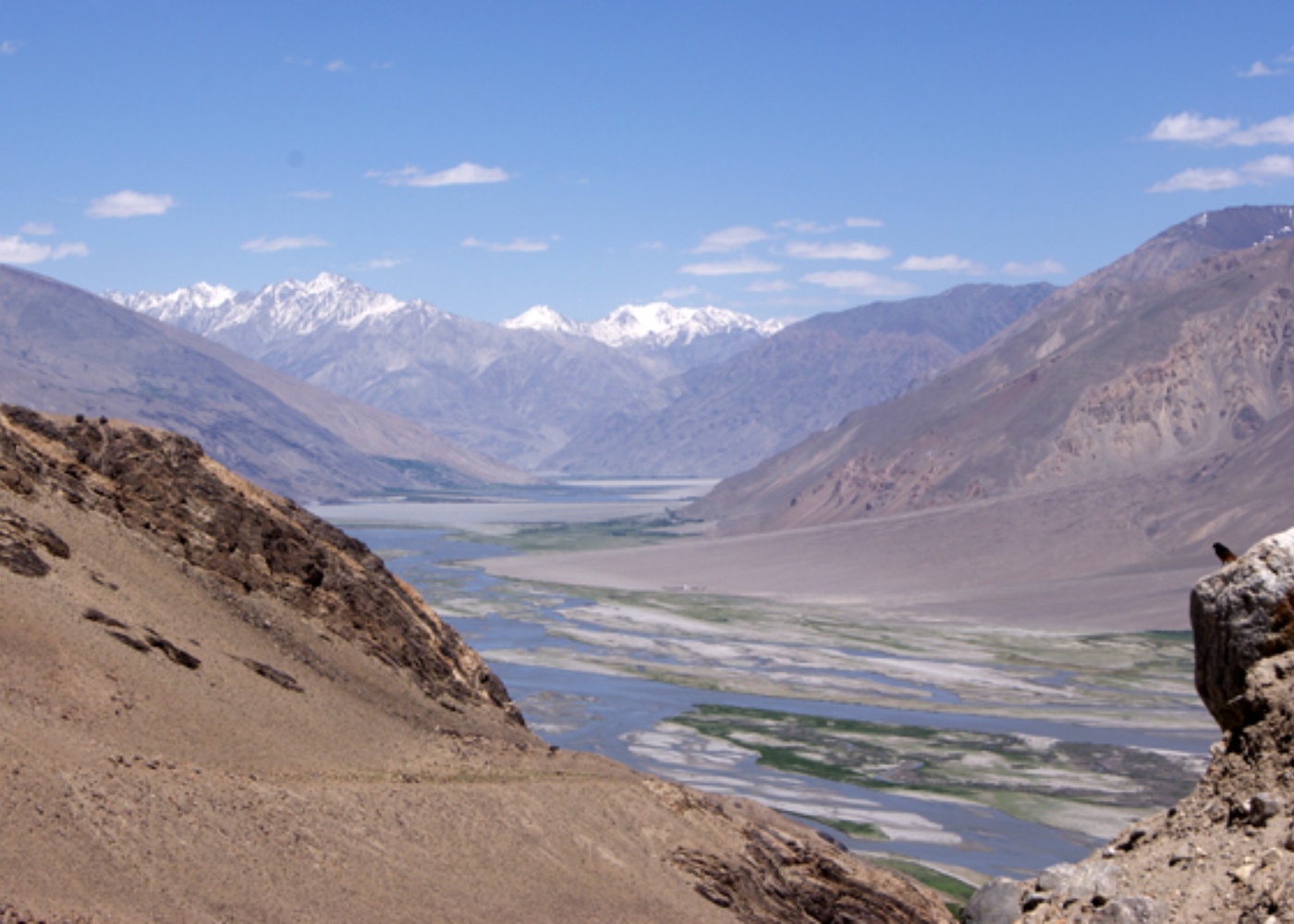

A boy selling garnets in Langar. "Roooby," he said. "Roooby."
Day 12: Khorog
You're back where you started. You will be covered in dust and B.O. You'll want to crash at Lalmo's guesthouse, eat some fresh jam and bread, and write it all down in your journal.
Day 13: Khorog to Dushanbe
The key is to get a flight back to Dushanbe, and that is no easy task. Be sure to go the day before — or as early in the morning as possible — to buy a ticket. The flights are inconsistent and prone to seat-nabbing by bribe-paying government officials. You may also be asked to take a stranger's baby on your lap, shipped between parents and grandparents in the two cities. This actually happened.
Day 14: Dushanbe to Istanbul
From the vantage point of an American, Istanbul feels exotic and adventuresome. From Tajikistan, it feels as subdued and safe as an Upper East Side nursery.
MAP IT
See the locations in this story. (Google Maps)
BUT WAIT, THERE'S MORE
Tajikistan Essentials
Road Trip to Khorog
The Meat Girls of Kyrgyzstan
